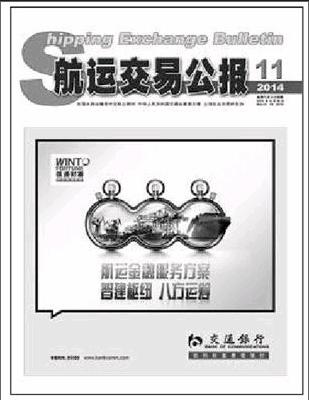Weekly Commentary on China Containerized Transportation
Zhu+Pengzhou

In the week ending March 7, China export box market was on the recovery period, which forced the whole market on the downward trend. Excess capacity made spot rate slip and the composite index decrease. On March 7, China (Containerized) Freight Index (CCFI) issued by Shanghai Shipping Exchange (SSE) quoted 1086.78 points, down by 2.6 percent week on week, while Shanghai (Containerized) Freight Index (SCFI) issued by SSE fell by 4.8 percent to 934.39 points.
In the week ending March 7, cargo volume kept stable in the Europe service, and the loading rate sustained at above 80 percent, with some even reaching beyond 90 percent. However, as many mega vessels above 10000TEU were ordered and gradually put into operation, the oversupply of capacity could not been improved. Spot rate declined further. On March 7, the freight index in the China-Europe service fell by 2.8 percent to 1497.79 points. In the Mediterranean service, cargo volume on the East coast was restrained by the political instability in Ukraine, and consignors were worried about the payment collection. Aiming to sustain loading rate, box carriers had to reduce rate for the attraction of more cargo, leading to further slip of spot rate. On March 7, the freight index in China-Mediterranean service quoted 1541.87 points, down by 5.3 percent week on week.
Despite stable demand on the U.S. market, Chinese manufacturing plants had not returned on the previous level, which delayed cargo volume recovery speed somehow. As a result, the average slot utilization rate was delayed to be recovered in the North America service. In order to consume the excess ship spaces, box carriers had to relax freight rate policy, and booking rate in the spot market declined. On March 7, the freight rate in the services from Shanghai to USWC and USEC services (covering seaborne surcharges) quoted USD1784 per FEU and USD3186 per FEU, down by 3.7 percent and 2.1 percent against one week ago respectively. Regarding the weak market condition, part box carriers delayed the rate increase plan from March 15 to April 1.
In the Australia/New Zealand service, demand not increased remarkably in the destination, and the average slot utilization rate sustained at around 80 percent, with spot rate slipping. On March 7, the freight index in the China-Australia/New Zealand service quoted 910.11 points, down by 2.6 percent against one week ago.
Cargo volume in the Persian Gulf service was weak, with loading rate hovering on the low level. Although part box liners adjusted services and limited capacity temporary, excess capacity in the whole market was not improved evidently. On March 7, the freight rate in the service from Shanghai to base ports of Persian Gulf (covering seaborne surcharges) declined by 4.4 percent from one week ago to be USD410 per TEU. The spot rate even tumbled to be around USD300 per TEU.endprint
Countries in the South America had no evident improvement on the economy, transport demand was weak in the South America service. Considering that its hopeless for the supply/demand condition to have an improvement, box carriers strengthened canvass, with spot rate falling. On March 7, the freight rate in the Shanghai-South America service (covering seaborne surcharges) dived by 11.4 percent week on week to USD796 per TEU.
Cargo volume increased in the Japan service, where average slot utilization rate kept at around 75 percent, with spot rate stable. On March 7, the freight index in the China-Japan service quoted 829.30 points, rising slightly by 1.1 percent against last week.
(Please contact the Information Dept of SSE for more details.)
SHIPPING EXCHANGE BULLETIN
TOTAL EDITION: 874
18/3/2014
CONTENT FOR THIS WEEK
?VLGC Market Increases 15 Newbuilding Orders within
One Month
Discovering the Background of New Players in VLGC Market
NOL Cuts Loss to be USD76m by Improving container business
China Shipping Group Collects Money through Many
Channels
The Annual Sessions of NPC and CPPCC Eyes on Shipping
Development
Hyundai Merchant Marine Deploys 3.3 Trillion Won
Self-Help Planendprint

